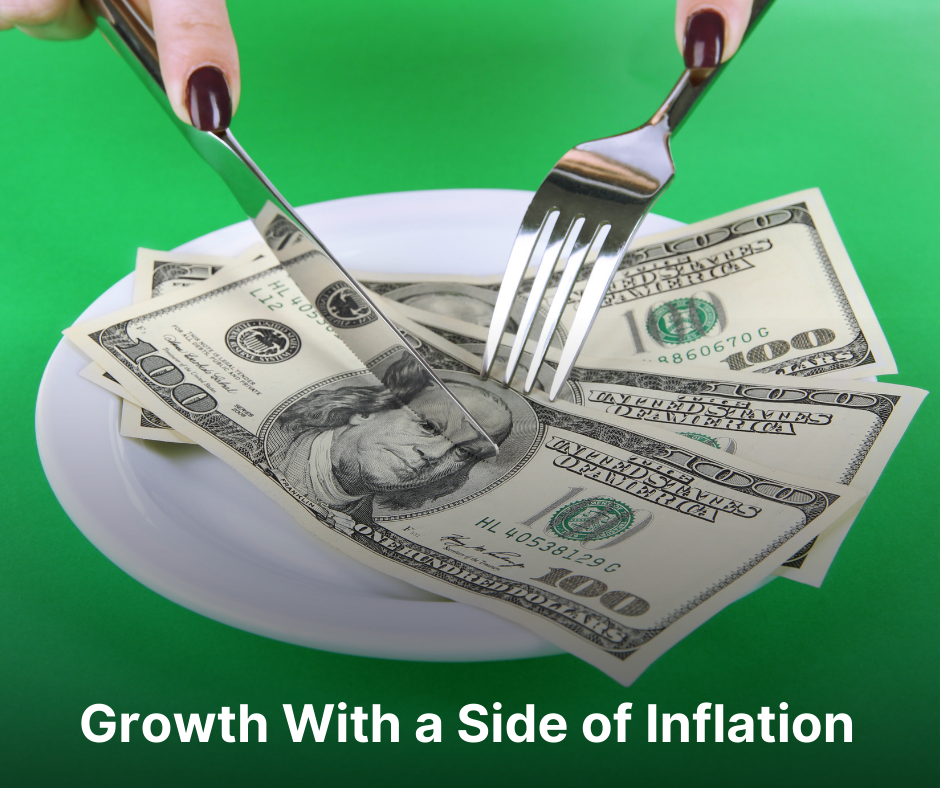Global Economy Seems to Have Finished 2021 With a Solid Momentum
While we believe the pace of economic growth will gradually decelerate over the course of the year, we expect it will remain above-trend. Driving this solid economic activity will be three distinct forces – the consumer, inventories, and business investment.
The consumer is in good financial shape. That’s partly because the fiscal policy response to COVID-19 lined the pockets of individuals with cash, particularly in the developed world. With checking account balances still well above their long-run average and debt-to-income ratios near their lowest levels on record, it seems reasonable to expect consumption will be a key driver of growth this year.
In addition to solid consumption, inventory growth looks set to support above-trend economic activity. We began to see an inventory build as we came into the fourth quarter, and it seems to have continued through the end of 2021. Looking ahead, we believe that inventory growth will provide an additional tailwind for economic growth in 2022.
Finally, investment spending looks set to accelerate. First, there has historically been a tight relationship between earnings growth and non-residential investment spending 12 months later; 2021 was a fantastic year for profits, and we expect that will translate into stronger capital spending. Second, management teams have stated openly that they plan to defend margins against rising input prices by passing along these higher costs to the consumer and, where possible, focusing on automation and efficiency. The latter requires investment, which we believe will increase in 2022.
While we are constructive on the 2022 economic growth outlook, we recognize that above-trend growth will be served with a side of inflation. In 2021 it became clear that inflation was not as transitory as many investors and policymakers had assumed. While we do not believe that inflation will evolve into a structural issue, we do believe that it will be elevated relative to the Federal Reserve’s (Fed’s) target over the coming year.
This macroeconomic backdrop has created significant questions around the appropriate trajectory of monetary policy in 2022. At its December meeting, the Federal Open Market Committee (FOMC) announced that it would accelerate the pace of asset purchase reduction (i.e., “tapering”) and aim to hike the federal funds rate three times in 2022. It seems perfectly reasonable for tapering to be accelerated, as the financial plumbing of the economy looks fine. However, tapering is very different from tightening, and it will likely be more difficult for the Fed to hike rates faster than they currently expect.
Although we take a constructive view of the economy, we recognize that investment returns may be more difficult to come by. Public markets have delivered remarkable performance over the past two years, but we expect that returns will be lower and volatility higher going forward. Further, while interest rates should rise, they will likely only do so gradually. At the end of the day, it will be essential for investors to embrace alternatives as they navigate a world characterized by muted expected returns, historically low-interest rates, and elevated volatility.
About the Author: David M. Lebovitz, Executive Director, is a Global Market Strategist on the J.P. Morgan Asset Management Global Market Insights Strategy Team. In this role, Lebovitz is responsible for delivering timely market and economic insights to clients across the country. He helped build the Market Insights program in the United Kingdom and Europe, has appeared on both Bloomberg TV and CNBC, and is often quoted in the financial press. Lebovitz first joined J.P. Morgan in 2010. Prior to joining the firm, he was a Research Analyst at Kobren Insight Management. Lebovitz obtained a bachelor's degree in Political Science and Philosophy, with a concentration in Leadership Studies, from Williams College in 2009. He earned a dual-MBA degree from Columbia University and London Business School in 2015. J.P. Morgan is an Associate Advisor member of TEXPERS. J.P. Morgan Asset Management is the marketing name for the asset management business of JPMorgan Chase & Co. and its affiliates worldwide. Please visit our website for more information: jpmorgan.com/institutional. Follow TEXPERS on Facebook, Twitter and LinkedIn as well as visit our website for the latest news about Texas' public pension industry.
David M. Lebovitz, Executive Director, is a Global Market Strategist on the J.P. Morgan Asset Management Global Market Insights Strategy Team. In this role, Lebovitz is responsible for delivering timely market and economic insights to clients across the country. He helped build the Market Insights program in the United Kingdom and Europe, has appeared on both Bloomberg TV and CNBC, and is often quoted in the financial press. Lebovitz first joined J.P. Morgan in 2010. Prior to joining the firm, he was a Research Analyst at Kobren Insight Management. Lebovitz obtained a bachelor's degree in Political Science and Philosophy, with a concentration in Leadership Studies, from Williams College in 2009. He earned a dual-MBA degree from Columbia University and London Business School in 2015. J.P. Morgan is an Associate Advisor member of TEXPERS. J.P. Morgan Asset Management is the marketing name for the asset management business of JPMorgan Chase & Co. and its affiliates worldwide. Please visit our website for more information: jpmorgan.com/institutional. Follow TEXPERS on Facebook, Twitter and LinkedIn as well as visit our website for the latest news about Texas' public pension industry.


